GICHIN FUNAKOSHI
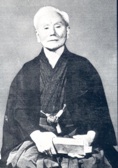
GICHIN FUNAKOSHI
Gichin Funakoshi was born in 1868 in Cho Shuri, the old capital city of the island of Okinawa.
He was born prematurely and was a sickly baby. The doctors said be would not live very long. He receives a traditional Samurai education from his maternal grandparents who belong to the Shizoku class (a Samurai class).
In 1871 he goes to primary school and clearly loves fighting with other boys. One of his classmates is Yasutsume Azato whose father is Master Azato, a karate expert. With his grandfather’s help, Gichin becomes Master Azato’s pupil.
In his adolescent years Gichin enrols in medical school by falsifying his date of birth but the Meiji government does not allow him to attend the school because of the way he wears his hair and because he belongs to such a traditional family.
At the age of 21 he deides to cut his hair and becomes a teacher to many primary schoolchildren, going against his parents’ wishes.
His career progresses rapidly but he never abandons his training and runs many kilometres every day. By day he is a schoolteacher in Naha and at night he trains under the guidance of Master Azato.
These are times in which one has to hide the fact that he is training. He practices kata which is considered to be the fundamental element of the pedagogical method.
Every night Gichin Funakoshi practises kata as he did the day before, and the day before that, as he will the day after, just as he has been for a long time… And it is always the same kata, until “Master Azato is satisfied with his mastery”.
Funakoshi tells that he was often exhausted and could hardly see the torch light, just waiting to hear the Master’s judgement which could either be “do it again” or “good”.
Funakoshi becomes Sensei in Japan without ever forgetting the virtues of kata. He loves to repeat: “Hito Kata San Nen”, three years for one kata.
Funakoshi and Azato do not speak very much, they communicate non-verbally.
The Master shows him what to do, sometimes introducing some variations. He can make surprising changes.
But Funakoshi never doubts him, he trusts his Master, taking, listening, watching and working. There will never be any conflict between them. Master Itosu is often with them.
Funakoshi settles down and starts a family suffering quite a few financial problems as he has to support ten people, his wife’s relatives, grandparents, uncles and aunts, et cetera.
It is a difficult time for Funakoshi. The population is almost entirely vegetarian due to their religion, Buddhism. His wife works very hard but encourages him to continue practising.
She learns the kata techniques just by watching her husband practise in the courtyard so she begins practising too. Of Funakoshi’s four children, only one takes an interest in the martial arts, Yoshitaka Funakoshi.
In 1903 the government decides to introduce karate in the schooling system. Funakoshi teaches primary school children.
A technical program must be compiled as the courses are so numerous. Master Itosu carefully chooses which katas are to be taught.
In 1904 the five Pinan katas are coded and later named Heian by Funakoshi. It is during the Taisho era that Gichin Funakoshi begins to develop karate in Japan. From 1915 on Funakoshi will devote himself wholly to developing his art, after thirty years of professional teaching.
In May 1922 he sadly leaves the island, his wife, his children and his Masters. Japan is the Path of Hope.
At the gathering there is an enormous crowd. Funakoshi’s masterful movements, his precision and the elegance of his strength make the crowd go wild and this will mark the beginning of the Funakoshi legend.
Master Kano, who adapted the ancient art of Ju-jutsu to create the modern art of Judo, “The Path of Fluidity” asks Funakoshi to give a demonstration in his KODOKAN dojo.
Funakoshi decides to stay in Japan. Two of his sons join him but his wife and his daughter stay in Shui. At the time he is 54 years old and leads a very poor life.
In 1921 he meets Sensei Otsuka, Nakayama’s pupil, who will train with Funakoshi. So as to promote his art Funakoshi mainly addresses intellectuals and gradually meets many people who will help him.
During his demonstrations he always tries to show how he is capable of great resistance although he is only a small man.
In 1923 karate is introduced into University. The first university to introduce karate is Keiko and Funakoshi teaches both at Keiko and at Meisujuku simultaneously.
Unfortunately that year a terrible earthquake hits Japan and causes much destruction, including the University of Keiko. On 23 September 1924 the Keiko dojo is reopened and in the same year so are many others.
With the help of Otsuka, Funakoshi makes the first changes to karate and changes the name of “Chinese fist” into “Empty hand”. By now Funakoshi has been living in Japan for four years and his work begin to take on a particular technique.
In the dojos Funakoshi creates the Kyu technique which represent the childhood of practise and the Dan technique which represent the maturity of man, thus interrupting an age-old tradition in the assessment of technical progress.
Funakoshi nominates himself the fifth Dan and it is for this reason that Oshima, who follows the Master’s teachings will keep the fifth Dan which, in the Shotokai style, is the highest level. Funakoshi teaches his pupils to be ever alert in their daily lives, even outside the dojo. He quickly criticises any of his pupils who reveal any kind of laxness in concentration.
Outside the dojo he knocks over the rice bowl of the pupils who do not hold it properly, i.e. metaphorically speaking, those who show vulnerability for an attack.
Sometimes he strikes somebody’s hand, without hurting them, if they are holding their chopsticks clumsily while eating. He is very strict, both inside and outside the dojo. He is constantly alert. He never goes around a street corner without making a wide turn so as not to be caught unawares in case of an attack.
Funakoshi teaches the highest initiative, SEN NO SEN, which consists in attacking one’s opponent before he has had the chance to begin his attack. SEN NO SEN requires a state of constant alertness.
Funakoshi believes that training which demands sweat, suffering and tears develops “the qualities of courage, courtesy, humility, integrity and self-control, all of which are essential to karate”.
Funakoshi’s parries and attacks are so potent that nobody can make the first move for an attack, and he is 60 years old. He has always believed that physical training also requires mental training.
Funakoshi believes that the “REI” greeting is not just bowing one’s head. He says that it must express the profound respect that every human being owes to his fellow human being as well as to himself.
He is profoundly humanist and believes in a peaceful society and in the a man’s role in his own context. He teaches that a practiser must never live in a state of illegality. Order and justice must be preserved if we do not want to ruin the fabric of society.

On 20 march 1928, upon a request coming from the Imperial Palace, he holds a demonstration with his six pupils before the Emperor.
Funakoshi has very clear ideas about free combat: he finds it is void of seriousness and realism and he refuses to accept this new fashion.
He concentrates his treachings on katas. In the Meisujuku dojo kata work is practised undeterringly.
Although he conveys so much sincerity to his disciples every day Otuska leaves Funakoshi in 1929.
After his departure Takeshi Shimoda becomes Funakoshi’s assistant in the Meisujuku dojo. Sensei Shigeru Egami, who will begin practising in 1932, was Takeshi Shimoda’s pupil and he remembers his travels as a disciple through the different regions and how Takeshi Shimoda was the most talented of all of Funakoshi’s pupils.
In 1933 Funakoshi changes the kata’s names into Heian, Hangetsu, Tekki, Empi, Gankaku and Kanku. In 1935 he publishes his second book and his disciples set up the SHOTOKAI Association.
He creates some leg techniques at the chudan level and for the face: yoko-geri, ushiro-geri and mawashi-geri. Funakoshi’s son Yoshitaka is manager of the Meisujuku dojo and he often tries to convince his father to practise modern karate.
Funakoshi replies “you are my pupil and you must do as I tell you” and then turns to his pupils and adds “follow my son’s way, it is the best”.
The Meisujuku becomes old and too small and in 1936 the first of the Master’s dojos is built in Zoshigaya. The first time Funakoshi goes there he is surprised to reads the words “SHOTO-KAN” (SHOTO room) over the doorway. SHOTO means “wind in the pine trees”. This dojo is a wonderful token of esteem to the sixty-eight-year-old man that he has become. In the years 1938-40 Funakoshi’s son never fails to insist upon the changes made to karate by his father.
The Second World War has begun and most of the experts have gone off to war and those who remain manage the karate courses with incredible intensity. At the end of summer 1945 Japan is in ruins and has lost about two million men.
The Master lives in pain. Some of his pupils are already dead while others are on the way to their final destination. Every night, when the dojo is silent, Funakoshi isolates himself in a corner to pray for their souls to find eternal peace.
Ginchin Funakoshi entrusts the courses with Hironishi because his son is in hospital.
His tuberculosis is getting worse and in the spring of 1945 he passes away. As soon as Yoshitaka Funakoshi dies Tokyo is bombed twice and the SHOTOKAN dojo is destroyed.
At the age of 77 Funakoshi goes to see his destroyed dojo and grieve for his beloved son.
He dreams of returning to his wife but she has been evacuated to Oitta, the southernmost part of the Japanese archipelago. He can no longer live in Tokyo.
In Oitta life is hard, his wife is ill and has been suffering from asthma for a very long time. After living together again for two years, in the autumn of 1947 his companion dies and leaves Funakoshi on his own.
He then goes back to Tokyo to live with his son Giei. In 1948, with the help of his pupils Funakoshi reopens the Keiko and Waseda dojos.
At the age of 81 he devotes himself to calligraphy and feels that in this new world there is no room for him or for his dreams.
He is almost completely abandoned by his pupils and on 26 April 1957 at 8.45 am the father of karate departs this world at the age of 89.
The SHOTOKAI Association reconstitutes itself according to the will of its founder with Hironishi as its president and Egami as its technical expert.
SHIGERU EGAMI
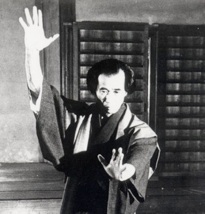
Shigeru Egami was born in Miyanoura-cho, Omuta-shi, Fukuoka-ken (Kyuoshu) on 17th December 1912. His parents were Taira e Hatsu Egami. When he started elementary school he was the smallest kid in the class, but he was the nimblest and the most talented in running and diving.
In 1925, he started high school and enrolled in a judo school. He had to walk for 8 km every day to get to school and during all those years, he had not missed a day of school, also because he needed a certificate of praise.
In 1933, he was admitted to the Faculty of Economy and at the same time, a school of Karate was opened and directed by Shihan Gichin Funakoshi.
Shigeru was taught by Sensei Shimoda, who soon died. Shigeru also participated to different karate presentations with his teacher’s son Yoshitaka Funakoshi, also called Gigo.
In 1935, the association SHOTOKAI brought together all Funakoshi’s disciples.
Egami graduated when he was 24, his father’s connections could let him got a good job, but he preferred to continue working as a waiter and to practice karate.
Soon he was called for active duty military service however; he was released just four days later because of pulmonary tuberculosis.
In 1937 he tried unsuccessfully to immigrate to Manchuria first and later to Brazil.
He started active duty military service again and used to train in the cold Korean winter: this caused a relapse of his illness and hence he went back to Japan.
Doctors were pessimistic and predicted to him that he would have died within a year because of his disease.
Against all medical prognoses, he continued to train very hard and his health condition improved. A year later, he started working in the mine directed by his father and in 1939 began to work for the Department of War.
In the same year was opened in Tokyo the Dainippon Karate-Do Shotokan Dojo".
In that time in Japan, just before the war, strength and discipline were considered to be the most important skills. All the practitioners regularly performed hundreds of ZUKI on the MAKIWARA: in this way the joints got deformed, while the body and the spirit tended to display very rigid positions and attitudes.
The teacher Funakoshi instead continued to hit the MAKIWARA with lightness. His son did the same keeping relaxed figures and the arms loose along the body.
On 30th December 1941 he married the 24-year old Chiyoko whose parents were Kojiro and Matsu Yamaguchi.
They moved to Tokyo and a year later, on 6th October, their first son Naoshi was born. When Shigeru returned from Omuta, he helped his brother Kaoru and started to practice Karate again.
From 1944, his life became particularly lively and in the meantime, his wife gave birth to their second son.
As a member of the board in the SHOTOKAN organization, he had also to reinforce his position with Teacher Funakoshi.
During the war, the Central DOJO as well as his house were destroyed by the bombs and the whole family had to live among the ruins, while he had also to deal with the difficulties of the teaching enterprise.
Despite all difficulties, the Sensei continued to teach Karate to children and employees. In 1948 his wife gave birth to their third son and in the same year he opened a school of Karate at the “factory Mitsui Miike”.
When he was 41, he returned to Tokyo and got to learn Teacher Hironishi who had been one of Funakoshi’s disciples.
At that time, different opinions on the basic problems of the practice begun to spread; could be the KATA a form in which every single move has to be perfect and definitively defined or could be the KATA a fluid loose form?
Sensei Egami said: “ …I had to change from rigid movements to rhythmic ones and I came to understand that after I had spent long hours in training sessions with my disciples.
The youngsters were improving so fast and I was the one who had to learn from them.”

In 1955, he became a SHIHAN of the school of KARATE at the Gakushuin University.
Unfortunately, he had some health problems and underwent to surgery.
In 1957, when he was 45, he became Sensei Funakoshi’s first assistant.
Funakoshi would have died in the same year, on 26th April and some schools of Karate organized, after his death, the first KARATE games.
The association SHOTOKAI was reformed according to the will of HIS founder and Shigeru Egami, as the successor of Funakoshi’s KARATE-DO, gave a new dimension to this art.
The one that wants to practice the real KARATE does not only need to concentrate on the harmony expressed by his opponent but it has to become a part of it.
It is not about winning or killing. What will happen if instead of contrasting the opponent’s movements you will try to follow them?
You will move as one, and when your adversary tries to hit your body will naturally follow his move to prevent the blow.
When you accomplish this, you will discover a new world.
When you are in harmony with your adversary and move with him without opposing, then and just then, the first attack will not exist anymore.
The meaning “KARATE NE SENTE NASHE – there is not a first attack in the Karate” could be fully understood just when this phase is reached…”
Shigeru Egami also encouraged the foundation of new schools of KARATE in Japan and all over the world.
Moreover, in 1957 he published the book “KARATE-DO for professionals”.
He visited Los Angeles, USA in 1973 and in Thailand in 1976.
Moreover, in this year he visited five other European countries where he met Tetsuji Murarami.
In 1977 he wrote the book “Introduction to Karate”
The discovery of loose KARA TE is dated 1942 when he abandoned with no regret the KARA TE he had practiced until then.
The Sensei’s KARA TE consists in hitting towards the interior of ourselves!
He underlined the importance of the IRMI - to look for the distance, of the correct IRIMI, and the understanding of the opponent’s intention before the attack itself.
Harmony is the primary aim but if the disciple lose it while practicing, the sincerity in hitting, and the real WAY would be lost as well as the martial art dimension!
In the late 70s Sigheru Egami had a lot of health problems.
He died on 8th January 1981 because of pneumonia when he was 68.
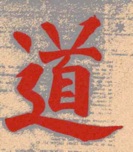
TETSUJI MURAKAMI
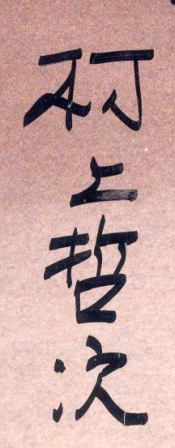
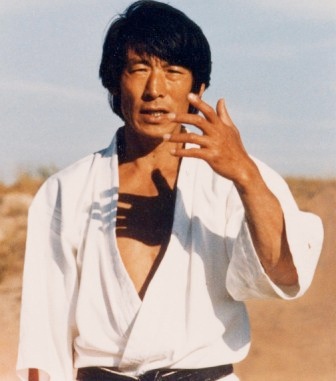
etsuji Murakami was born in Shiozuka in 1927.
After practising Kendo, at the age of 19 he enrols in Master Yamagushi’s dojo (he is a pupil of Sensei Funakoshi’s). He does not accept him willingly and gives himself three years’ time to decide whether to take him on as a student or not.
It is 1946 and karate is very well-known in Japan, so much so that after the war people practised it in the streets as two-thirds of the city of Shiozuka had been bombed and destroyed. Sensei T.M. tells us that in those times fighting was very important. Kihon was used a lot and Tetsuji is completely won over by karate and for the next ten years will follow the hard but exciting courses held by his master.
Master Murakami arrives in France on 3.11.1957 where his is summoned by Mr. Plee in the quality of a Japanese karate expert.
At the time he was practising Shotokan and said that this practise was called Karate but it was actually not really karate. In fact, the early French karatekas had learned karate from Japanese books. This art had undergone several influences as among those who practised it there were French and Chinese boxing instructors. Practically speaking, the technique was not very accurate but everybody had a good fighting experience.
The Sensei explained that in Japan the spirit of BUDO is part of everyday life. However, when asked to explain this the are unable to. It is a kind of sixth sense. In the beginning it is incomprehensible, you just do it without thinking about it. Then, by merely repeating a gesture an attitude can then be understood by the body, It is not enough to teach the techniques, one must love one’s pupils. Strictness does nothing without love and nothing can be done if there is no love. Love between my pupil and myself is absolutely necessary, but for there to be love I must possess harmony within, in my body and in my spirit. Sometimes, during a course, I cannot find such harmony.
Maybe it is my fault or maybe it is my pupils’… When I find harmony within it is easier to teach. There must exist a kind of communion between my pupils and myself for us to be able to communicate.
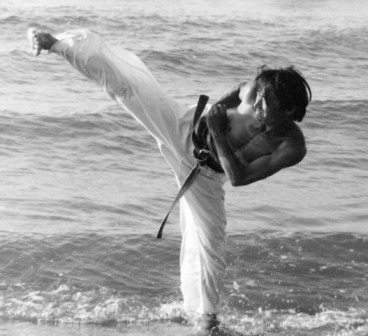
The enormous difference lies in the manner in which it is performed.
The Sensei explained that the word Shotokai means “the organisation of the Funakoshi methods”. “Kai” means “college”. Master Funakoshi’s old students founded a friendly association in order to help Master Funakoshi’s friends and their work with Karate. The “Dojo” is called “Shotokan”, “Kan” meaning “house”. Master Funakoshi named his method “Karate-Do”. But very soon his Dojo’s name was confused with his method and his students came from the Shotokan...
The Shotokai now owns the Central Dojo – Hombu Dojo of which Master Shigeru Egami is the head.
The difference in method is profound; we try to be as natural as possible. The body cannot be separated from the spirit. If the spirit cannot be controlled the body can never be controlled. The body must be natural and open and the spirit always ready.
In the following years Sensei Murakami spreads Shotokai throughout many European and non-European countries. He manages to create several associations in every country and thus becomes a very strong point of reference for Shotokai.
By many considered an introvert and a cold man, in truth he is very meditative and in continuous technical evolution, in constant search, by means of his lean and agile body full of energy, of the essence of Karate-Do traditional Shotokai.
In his private life he is a lover of pipe smoking, classical music, coffee, his pet poodle and his Toyota. Together with his wife Nieves and his son Hiroshi, once a year in July he organises the fabulous International Workshop in Sérignan where hundreds of followers flock to from all over the world.
In 1986, already a very sick man, he organises a memorable trip to Japan with his delegation of European followers where he and his students present European Shotokai to the Japanese.
This is the last time that he will wear his Karategi as soon after his illness will get worse and after much suffering he will pass away on 24 January 1987, leaving an immeasurable emptiness among his disciples.



